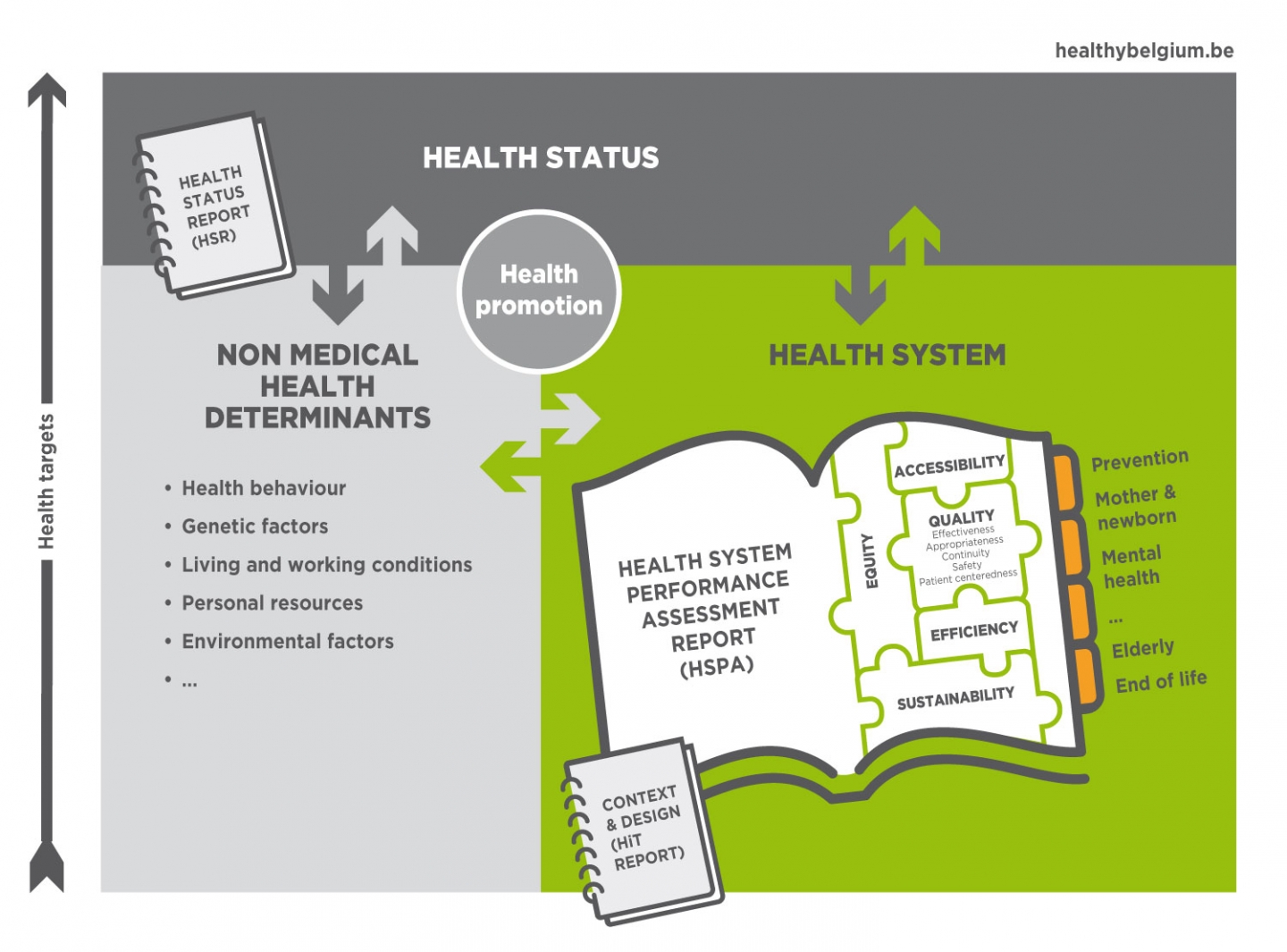All European countries within the World Health Organization (WHO) have decided to regularly perform a kind of "check-up" of their health care system. This is known as the ‘Health System Performance Assessment (HSPA)’.
This check-up is based on a series of measurable indicators that together offer a complete, transparent and accountable vision on the performance of a health system and allows to monitor the changes over time. Therefore, the HSPA process is a tool for the health authorities to plan their health and care strategy, for example by setting quantified health goals to be met by a set deadline.
The Belgian HSPA approach is part of a conceptual framework that includes three interconnected levels:
- Health status, which offers a global vision of the health of the Belgian population through key indicators (eg life expectancy, quality of life, prevalence of certain diseases)
- Non-medical determinants of health: this level encompasses the many factors that affect health and the use of care (when and how). These determinants include behaviours and lifestyles (smoking, physical activity, etc.), genetic factors, living and working conditions, personal resources, environmental factors.
- Health system, which is evaluated in four dimensions: the quality, accessibility, efficiency and sustainability of care. The quality of care is subdivided into five sub-dimensions (effectiveness, adequacy, safety, centrality of the patient and continuity). To these four dimensions is added a fifth, transversal one: equity. In addition, five specific domains of care were analysed: prevention, mental health care, care for the mother and newborn, care for the elderly and end-of-life care.
- Health promotion is an area that extends well beyond the confines of the health system alone; rather than providing a partial view of things, we chose not to address this topic in this site.

The indicators in the HSPA report are classified according to these specific dimensions and domains of care. Depending on your areas of interest, you can look at the indicators by the dimension they represent (eg, all indicators related to the accessibility of care), or by the domain of care to which they belong (eg, all end-of-life care indicators).
The HSPA 2019 report contains 121 indicators. They can also be consulted on the KCE website.
 |
Good results and improving |
 |
Good results, trend not evaluated |
 |
Good results and globally stable |
 |
Good results but deteriorating |
 |
Average results but improving |
 |
Average results, trend not evaluated |
 |
Average results and globally stable |
 |
Average results but deteriorating |
 |
Poor results but improving (warning signals) |
 |
Poor results, trend not evaluated (warning signals) |
 |
Poor results and globally stable (warning signals) |
 |
Porr results and deteriorating (warning signals) |
|
C |
Contextual indicator: no trend (no evaluation is given) |
|
|
Contextual indicator: upwards trend (no evaluation is given) |
|
|
Contextual indicator: stable trend (no evaluation is given) |
|
|
Contextual indicator: downwards trend (no evaluation is given) |


